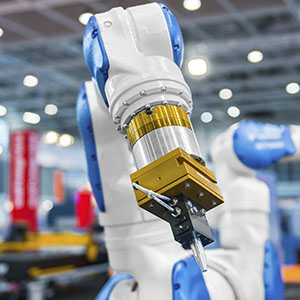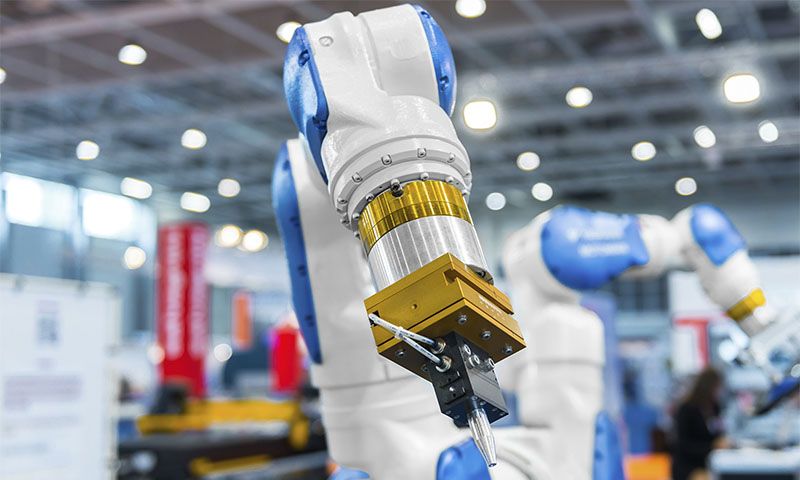As one of the world’s largest manufacturers of cosmetics, skincare, hair care and hair coloring products, L’Oreal operates a number of different types of distribution centers, ranging from facilities that primarily handle full pallets to case and piece picking operations.
Each has its own set of demands and approaches to order fulfillment.
“What’s impacting our operations the most is the change in order profiles due to the rise of e-commerce,” says Erik Rodriguez, director of supply chain for L’Oreal Americas. “The sheer volume of orders has increased, but the lines per order has decreased.
Additionally, there’s pressure from our retail customers to reduce our lead times and improve our delivery times because they are running leaner inventories.”
Those customer challenges are happening against the backdrop of increasing competition for labor and a mandate to drive continuous improvements in safety and ergonomics. “In just about every major city where we have distribution centers, there is real competition for labor,” says Rodriguez. Put them together—the need for speed, quality, service and labor shortages—and “automation becomes a way to operate successfully within the context of these competing demands,” says Rodriguez.
In fact, new demands may be changing the rules for justifying automation, at least when it comes to the traditional measure of return on investment, adds Rich Werner, vice president of physical flows for L’Oreal’s consumer products division.
“ROI is still important, but the justification for automation is no longer purely ROI. It’s also the ability to meet the surges in demand on peak order days, the quality of the pallets going out the door and the improvements in ergonomics and safety that automation can bring to an organization.”
To that end, L’Oreal is in the midst of implementing solutions as varied as robotics to automated goods-to-person solutions in its DCs on a global basis.
Automation enables the business
What does L’Oreal look for when it considers new automation technology? “We look for scalability and the ability to connect with other pieces of automation in the future,” says Rodriguez. What’s more, the automation should in some way enable the business or enable new ways to meet the needs of the market.
Slotting comes of age
Not all automation projects involve big capital investments in equipment. Beginning in 2012, L’Oreal began to ask what other types of tools it might be able to deploy that can be used in conjunction with mechanization to deliver a multiplier effect. One answer was slotting. L’Oreal was already using a homegrown slotting program with a lot of limitations. “We decided that slotting was something we could deploy easily and would pay for itself in a matter of months in some facilities,” Rodriguez recalls. “We also thought that it could complement what we were doing with labor management. To me, it was a basic tool.”
L’Oreal engaged a consultant from DMLogic to analyze the different suppliers and solutions available in the market from pure play slotting software vendors, from consulting organizations and as a module from one of the best-of-breed warehouse management system (WMS) providers.
Once L’Oreal decided that it did not want to be beholden to a consultant or a WMS provider for slotting, the team and their consultant compiled a list of some two dozen attributes to meet its requirements and ran a tender. Eventually, the choice came down to two pure play candidates. The ultimate winner offered a solution that could be implemented relatively easily, but offered the ability to scale and add functionality as L’Oreal gained experience with the tool.
Several areas were targeted for improvements, including:
- a reduction in travel times to reduce order cycle times;
- more efficient use of storage space;
- a reduction in errors;
- more effective storage by weight of the item or movement of a SKU to improve ergonomics;
- more effective storage based on how pallets are formed, such as heaviest items on the bottom;
- co-locating items that are commonly ordered together; and
- the ability to load historical information into a forecasting tool to best slot for the rollout of a new product launch.
For the first rollout, L’Oreal chose one of its mature facilities that was already using the homegrown slotting tool. If they could show improvements there, the thinking went, then they had something. Within a few months, the lines picked per hour had improved by 12%. “Based on the outcome of the pilot, we have so far implemented slotting in 17 of our 23 DCs in the United States,” Rodriguez says. Slotting has also gone live in Mexico, Chile, Argentina, Brazil, Canada and France, with plans for other facilities in Western Europe, Australia and South Africa.
Now that it is up and running, slotting is delivering a sustainable competitive advantage. Improvements have ranged from reductions of up to 28% in bends and reaches, reductions of up to 21% in travel distances and improvements of from 10% to as much as 30% in lines per hour picked, depending on the maturity of the operation. “If you have the volume to justify the investment, it makes perfect sense,” Rodriguez says. “And, of course, you have to keep thinking about what your business is going to look like in the next three to five years to remain competitive.”
About the Author
Follow Robotics 24/7 on Linkedin
About the Author
Follow Robotics 24/7 on Linkedin
About the Author
Follow Robotics 24/7 on Linkedin
Article topics
Email Sign Up



















